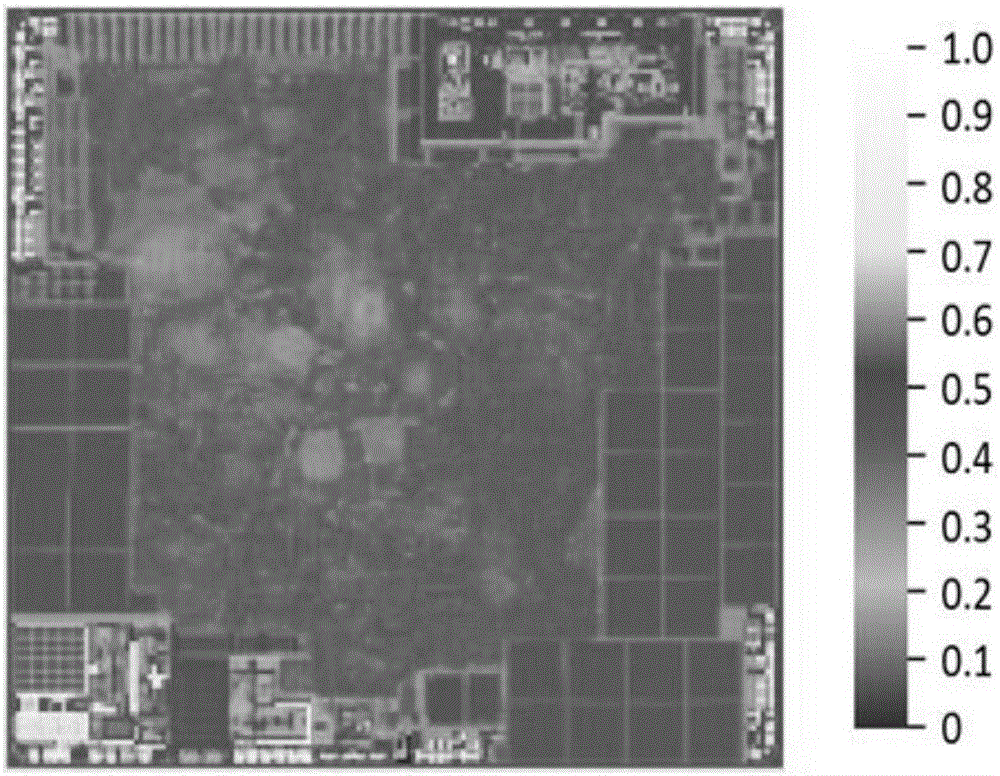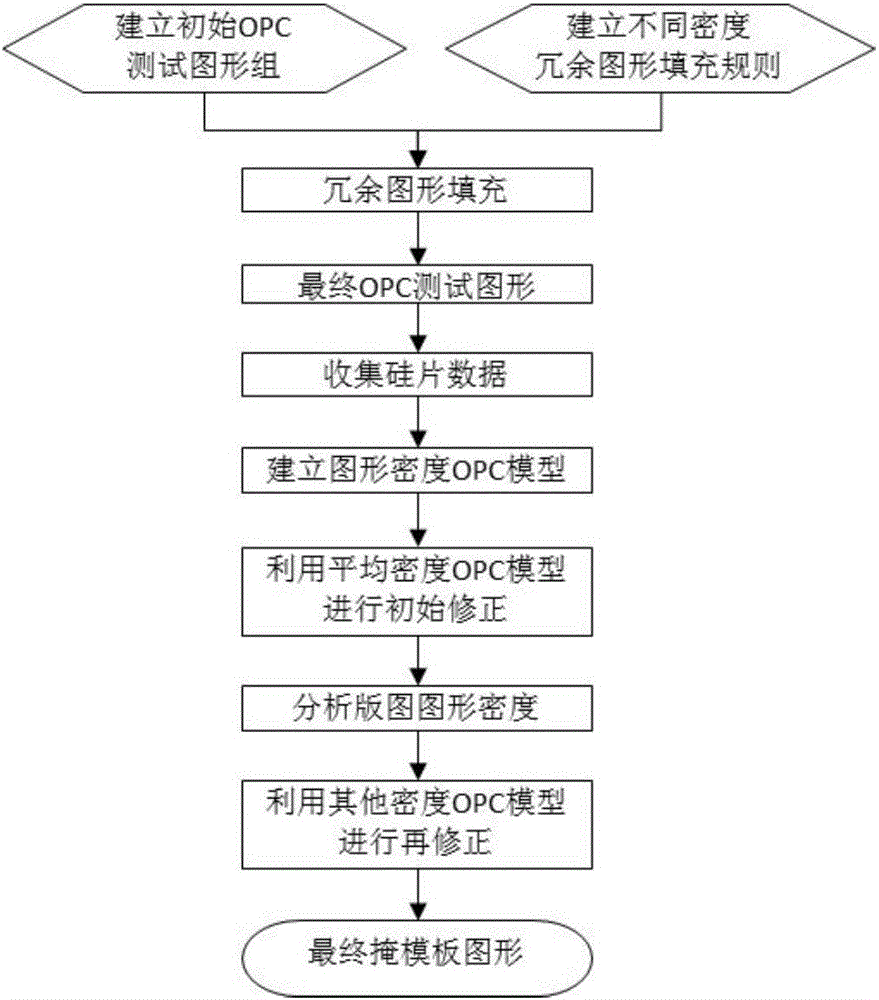Process model modeling and correcting method based on graph density
A technology of pattern density and process model, which is applied in special data processing applications, instruments, electrical digital data processing, etc., and can solve the problems of difficulty in guaranteeing model accuracy, large pattern density variation range, and large test pattern density graduation range. , to achieve the effect of improving precision and improving accuracy
- Summary
- Abstract
- Description
- Claims
- Application Information
AI Technical Summary
Problems solved by technology
Method used
Image
Examples
Embodiment 1
[0078] It is clear to those skilled in the art that, from the actual product pattern density analysis, if redundant pattern processing is added, the typical pattern density range is between 10% and 80%, and the average pattern density is about 30% to 40%. The pattern density of the active region layer is slightly higher, and the density of the polysilicon layer is slightly lower.
[0079] In this embodiment, the case where N is equal to 3 is selected for detailed description.
[0080] Assuming that the average density is 40%, the low density is 20%, and the high density is 60% as the target test pattern densities, three sets of OPC test patterns are designed respectively to build models with three different pattern density ranges. The specific steps can be as follows:
[0081] ①. Design the initial test pattern group required for OPC model calibration according to the layout design rule (Design Rule) and the lithography target. These test patterns can include a pattern group d...
PUM
 Login to View More
Login to View More Abstract
Description
Claims
Application Information
 Login to View More
Login to View More - R&D
- Intellectual Property
- Life Sciences
- Materials
- Tech Scout
- Unparalleled Data Quality
- Higher Quality Content
- 60% Fewer Hallucinations
Browse by: Latest US Patents, China's latest patents, Technical Efficacy Thesaurus, Application Domain, Technology Topic, Popular Technical Reports.
© 2025 PatSnap. All rights reserved.Legal|Privacy policy|Modern Slavery Act Transparency Statement|Sitemap|About US| Contact US: help@patsnap.com



